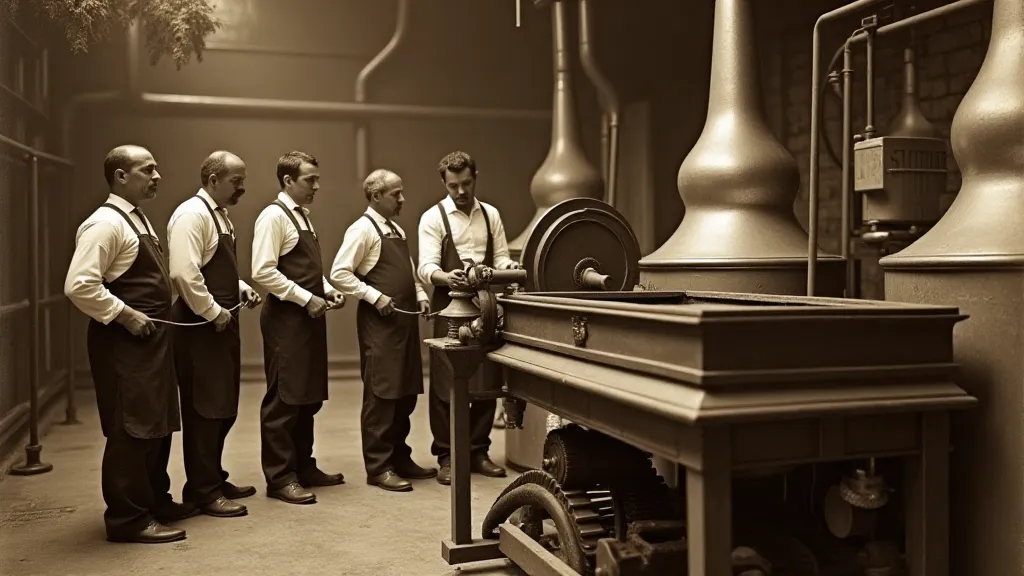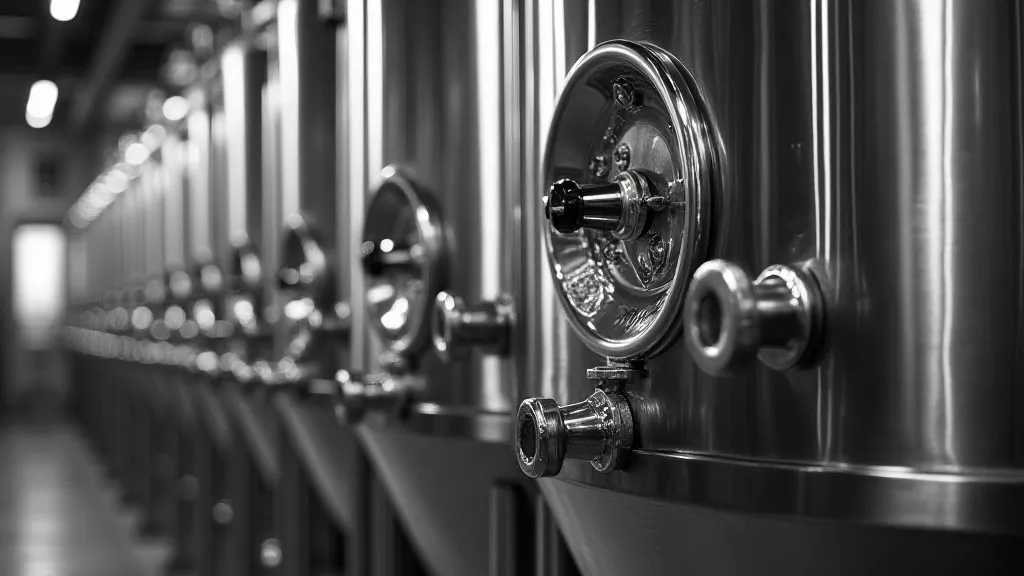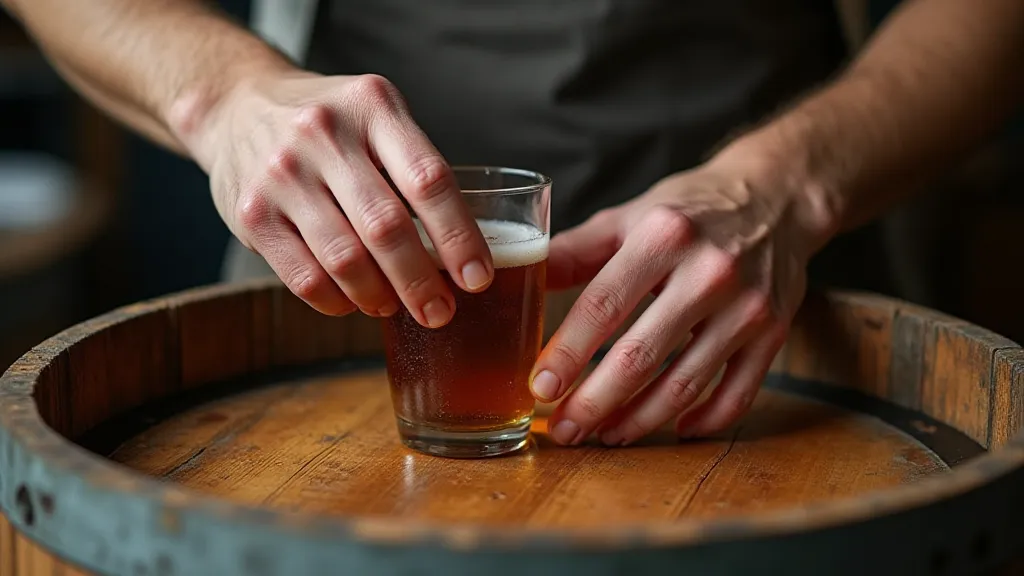The Bitterness of Progress: How Automation Changed the Face of Local Brewing
The scent of malted barley, warm and yeasty, used to be a constant in our region. It clung to clothing, permeated workshops, and spoke of a slower, more deliberate pace of life. It was the smell of craft, of tradition, of a brewer's intimate knowledge, poured into every batch. My grandfather, a carpenter by trade, used to tell me stories of the old breweries - not as a drinker, mind you, but as an observer of artistry. He’s since passed, but I can still picture him, meticulously restoring an antique accordion, his fingers tracing the worn keys with the same reverence he described watching a brewer manually turn the mash tun. Both, he’s explained, were demonstrations of human skill meeting natural ingredients.
The history of local breweries isn't just about beer; it's a microcosm of industrial evolution, a story of how the relentless march of progress can both elevate and erode. Before the gleaming stainless steel tanks and computerized controls that dominate modern breweries, there was muscle, ingenuity, and a profound connection between the brewer and the process. For generations, families ran these businesses, passing down recipes and techniques—secrets whispered from father to son, mother to daughter.

The Pre-Automation Era: A Brewer's Symphony
Imagine a brewery without the hum of motors, the whir of pumps. Instead, picture men and women—often entire families—working in sync, performing each step of the brewing process by hand. The malting of the barley, the milling, the mashing, the lautering, the boiling, the cooling – all requiring physical exertion and a keen eye. The brewer’s role wasn’t just about following a recipe; it was about interpreting the ingredients, reacting to subtle changes in temperature and pressure, and adjusting the process accordingly. This deep understanding resulted in beers that reflected the unique character of the region – the water, the climate, the locally sourced ingredients.
The equipment itself was often a work of art. Mash tuns, lauters, and kettles were fashioned from wood or copper, painstakingly crafted by local blacksmiths and carpenters. The wooden vessels imparted subtle flavors to the beer, adding another layer of complexity. Copper, with its excellent heat conductivity and ability to inhibit bacterial growth, was highly prized but expensive, often passed down through generations.
It wasn't simply about the physical labor. It was the *knowledge* embedded in the process. Older brewers knew exactly how long to mash based on the feel of the grain, how to judge the “head” on the wort simply by observing its color. This wasn’t science; it was a practiced intuition honed over decades of observation. The accordion, in its own way, mirrored this. Restoring one isn't simply reattaching bellows and replacing keys; it’s understanding how each component interacts, how the breath, the pressure, the subtle imperfections of the wood contribute to the instrument’s unique voice.
The Rise of Efficiency: The Mechanical Revolution
The late 19th and early 20th centuries brought significant changes. The Industrial Revolution didn't just transform factories; it began to reshape breweries as well. Efficiency became the new mantra. Brewers, facing increasing competition and a growing demand for beer, sought ways to streamline production. Mechanical mash tuns, steam-powered pumps, and eventually, automated bottling lines, began to replace manual labor.
While the initial adoption was slow – the upfront cost of new equipment was considerable – the benefits were undeniable. Production increased dramatically, reducing labor costs and allowing breweries to reach wider markets. However, this shift came at a price. The intimate connection between the brewer and the beer began to fade. The subtle nuances of flavor, once so prized, were often sacrificed in the pursuit of consistency and volume.
My grandfather, again, related a poignant story. He knew a brewer who, shortly after his brewery installed an automated system, lamented the loss of a certain "spark" in their flagship ale. He couldn't quite articulate it, but the beer, while technically perfect, lacked the character it once possessed. He missed the feel of the grain, the sound of the manual process, the quiet moments of judgment that guided his hands. Like a player who’s accustomed to the responsiveness of a vintage accordion suddenly forced to use a modern, mass-produced model, he felt a disconnect, a loss of control.

The Stainless Steel Legacy: Consistency vs. Character
Today, most breweries rely heavily on automation. Stainless steel tanks, computer-controlled processes, and automated bottling lines are the norm. This has brought about many advantages: increased production, greater consistency, and the ability to produce a wider variety of beer styles. The accessibility of brewing equipment also means a proliferation of craft breweries, which is something to be celebrated.
However, the debate continues: does automation inevitably diminish the quality and character of beer? Many argue that the focus on consistency has led to a homogenization of flavor. The subtle variations that once distinguished one brewery's beer from another have become less pronounced. The artistry, the human touch, has been somewhat diluted.
There's a growing movement, however, that's seeking to reclaim some of that lost artistry. Some breweries are incorporating elements of traditional brewing methods, using wood-fired kettles, open fermentation vessels, and even employing manual labor to perform certain tasks. These are often smaller-scale operations, dedicated to preserving the heritage of local brewing.

Preserving the Heritage: A Taste of the Past
The history of local breweries isn’s just a story about beer; it's a story about community, craftsmanship, and the enduring power of tradition. While automation has undoubtedly transformed the brewing industry, it’s important to remember and appreciate the legacy of those who came before. Just as antique accordions, though capable of being modernized, retain their charm and value precisely because of their history and individual character, the flavors and techniques of traditional brewing deserve to be preserved.
Whether through supporting breweries that embrace traditional methods, learning about the history of local brewing, or simply appreciating the artistry that goes into every pint, we can help ensure that the spirit of the past continues to flavor the future.


![Hops & Harmony: How Immigration Shaped the Brewing Traditions of [Region]](/thumbs/hops-harmony-immigration-beer-traditions.webp)
![The Copper Constellation: Mapping the Lost Breweries of [Region Name]](/thumbs/the-copper-constellation.webp)

